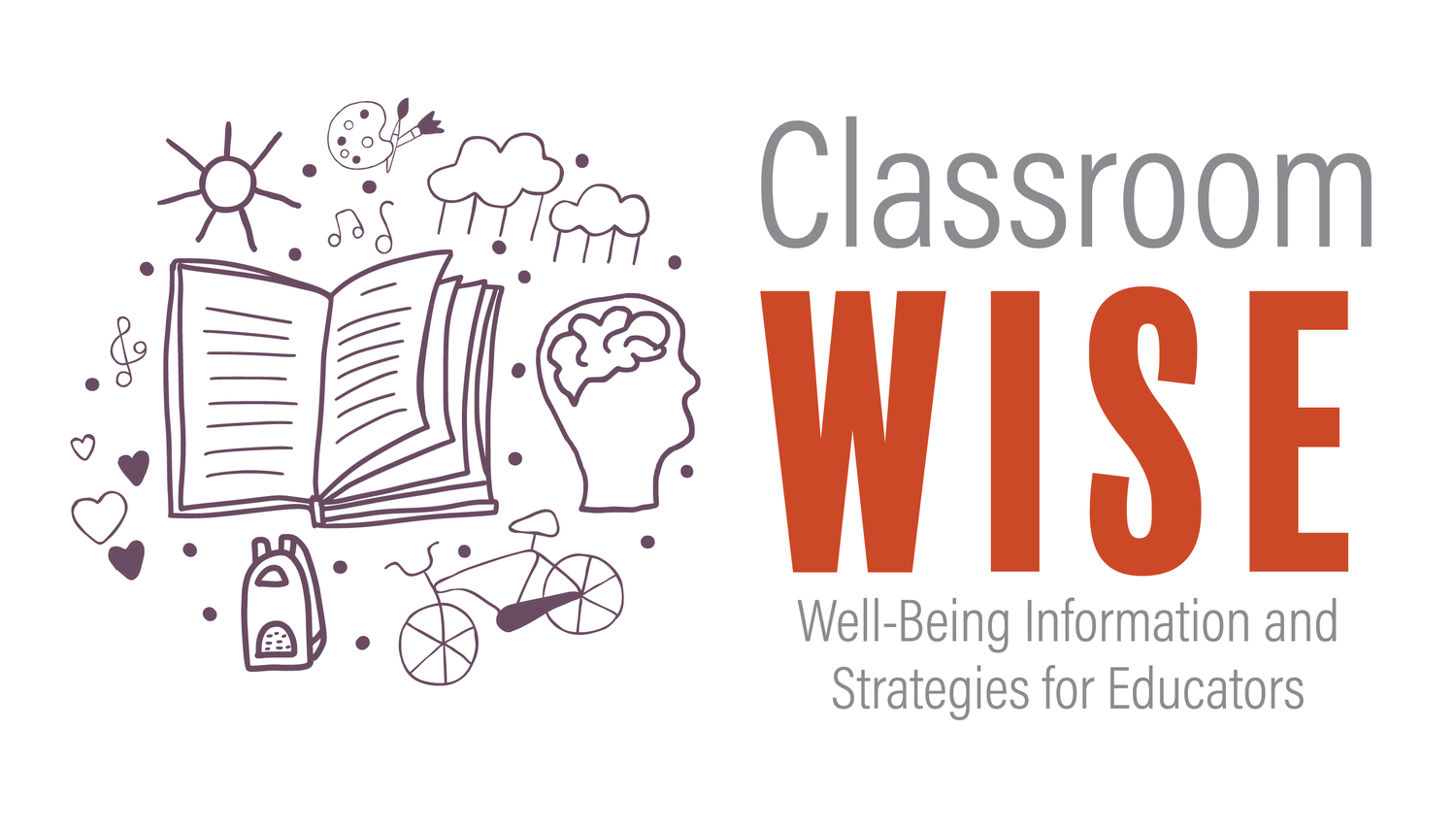
Classroom WISE Resources
Module 1: Creating Safe and Supportive Classrooms
Glossary
This resource includes definitions for key terms used throughout the Classroom WISE course.
Engagement
Building Trauma Sensitive Schools
This resource is a packet that contains guidelines, strategies, and professional development activities that can be used to build trauma-sensitive schools.
Developed by the National Center on Safe Supportive Learning Environments
Creating a Supportive Classroom Climate
This resource is a module from a self-study workbook that provides tools to reduce bullying behavior and build a more supportive classroom environment.
Developed by the National Center on Safe Supportive Learning Environments
This resource describes what community building activities are, how and when to use them, and includes a community building activity that educators can implement with their students.
This resource is a guide to active listening skills and strategies, which provides ways to help make students feel heard and understood.
This resource describes the importance of using positive affirmations to create a safe and supportive classroom.
This resource is an overview of the engagement strategies detailed in Module 1.
Strategies for Welcoming Students
This resource provides ideas for warmly welcoming students to the classroom, which can encourage engagement.
This resource is a list of questions that can be used to better understand students and their interests, which helps students feel safe and supported.
Safety
Bullying Guidelines for Teachers
This resource is a webpage that summarizes bullying guidelines, including do's and dont's.
Developed by Learning for Justice
This resource is a guide to using restorative circles, which can be used proactively to develop relationships and build community or reactively to respond to wrongdoing, conflicts, and problems.
Developed by the International Institute for Restorative Practices
Defining Restorative Conferences
This resource is a guide to implementing restorative conferences, which are structured meetings between offenders, victims, and both parties’ families and friends to deal with the consequences of the wrongdoing and how to repair harm.
Developed by the International Institute for Restorative Practices
National Drug and Alcohol IQ Challenge
This resource is an interactive National Drug & Alcohol IQ quiz is a brief test of teenagers' knowledge about substance use.
Developed by the National Institute on Drug Abuse
This resource is created by the federal government to provide schools and districts with actionable recommendations to create a safe and supportive learning environment where students can thrive and grow.
Developed by the U.S. Departments of Education, Justice, Homeland Security, and Health and Human Services
Strategies for Classroom Safety
This resource provides an overview of the classroom safety strategies detailed in Module 1.
This resource describes the importance of displaying inclusivity symbols in the classrooms to signal the classroom is a safe and supportive space to students.
This resource explains how to create a Take What You Need Poster, as well as the benefits of including this poster in a classroom.
Environment
This resource is a guide to creating a safe space in the classroom where students to take a moment away from potential triggers and practice self-regulation skills.
This resource is a guide and self-assessment for developing the physical environment of the classroom.
Developed by the Midwest PBIS Network
This resource includes both sample and blank rules within the routines matrix for use in applying classroom rules across contexts.
Supporting and Responding to Behavior: Evidence-Based Classroom Strategies for Teachers
This resource is a document that includes an interactive map of classroom PBIS strategies, a self-assessment, examples in elementary and secondary settings, and implementation scenarios.
Developed by the Center on PBIS

